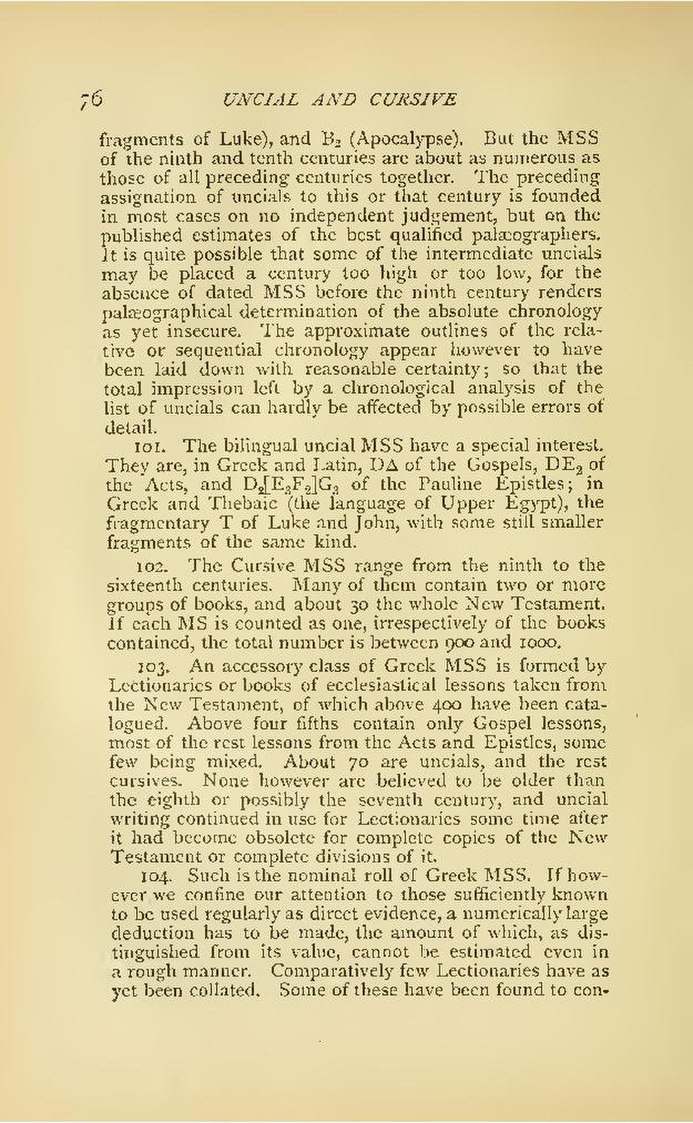fragments of Luke), and B2 (Apocalypse). But the MSS of the ninth and tenth centuries are about as numerous as those of all preceding centuries together. The preceding assignation of uncials to this or that century is founded in most cases on no independent judgement, but on the published estimates of the best qualified palæographers. It is quite possible that some of the intermediate uncials may be placed a century too high or too low, for the absence of dated MSS before the ninth century renders palæographical determination of the absolute chronology as yet insecure. The approximate outlines of the relative or sequential chronology appear however to have been laid down with reasonable certainty; so that the total impression left by a chronological analysis of the list of uncials can hardly be affected by possible errors of detail.
101. The bilingual uncial MSS have a special interest. They are, in Greek and Latin, DΔ of the Gospels, DE2 of the Acts, and D2[E3F2]G3 of the Pauline Epistles; in Greek and Thebaic (the language of Upper Egypt), the fragmentary Τ of Luke and John, with some still smaller fragments of the same kind.
102. The Cursive MSS range from the ninth to the sixteenth centuries. Many of them contain two or more groups of books, and about 30 the whole New Testament. If each MS is counted as one, irrespectively of the books contained, the total number is between 900 and 1000.
103. An accessory class of Greek MSS is formed by Lectionaries or books of ecclesiastical lessons taken from the New Testament, of which above 400 have been catalogued. Above four fifths contain only Gospel lessons, most of the rest lessons from the Acts and Epistles, some few being mixed. About 70 are uncials, and the rest cursives. None however are believed to be older than the eighth or possibly the seventh century, and uncial writing continued in use for Lectionaries some time after it had become obsolete for complete copies of the New Testament or complete divisions of it.
104. Such is the nominal roll of Greek MSS. If however we confine our attention to those sufficiently known to be used regularly as direct evidence, a numerically large deduction has to be made, the amount of which, as distinguished from its value, cannot be estimated even in a rough manner. Comparatively few Lectionaries have as yet been collated. Some of these have been found to con-